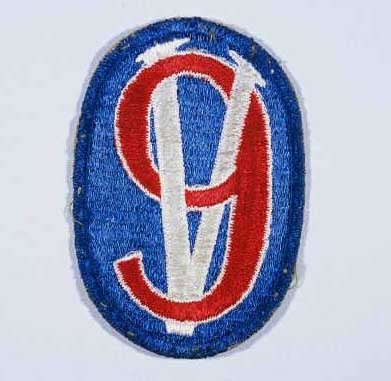The 95th Infantry Division during World War II
In 1985, the United States Holocaust Memorial Museum and the US Army Center of Military History began a program to honor US Army divisions that took part in the Allied liberation of Nazi camps. The US Army Center of Military History defines a liberating division as one whose official records show its presence at a camp within 48 hours of the first soldier’s arrival. The 95th Infantry Division is among the 36 US divisions that have been recognized to date.
Key Facts
-
1
US, British, Soviet, and Canadian troops encountered concentration camps and other sites of Nazi crimes as they advanced across Europe in 1944 and 1945.
-
2
The Allied soldiers liberated sick and starving camp prisoners from Nazi tyranny. They also provided them with food, clothing, and medical aid.
-
3
The United States Holocaust Memorial Museum and the US Army Center of Military History have recognized 36 US divisions for their role in the liberation of Nazi camps.
95th Infantry Division Campaigns during World War II
Formed in 1942, the 95th Infantry Division landed in France on September 15, 1944, some three months after the Allies invaded France on D-Day (June 6, 1944). In October, the "Victory" division advanced to the Moselle in Lorraine, where it repelled German military efforts to cross the river.
The following month, the division captured the French city of Metz and entered Germany, establishing a bridgehead on the Saar River. In February 1945, the "Victory" division was redeployed to the Limburg province of the Netherlands, near the city of Maastricht. From there, the 95th moved into Germany and advanced into the industrial Ruhr region. On April 13, 1945, it captured the city of Dortmund.
The 95th Infantry Division and the Liberation of Werl
In April 1945, the "Victory" division uncovered a German prison and civilian labor camp in the town of Werl. On April 7, the unit reported discovering a camp housing some 4,500 undernourished French officers and 800 enlisted men. The 95th provided the prisoners with emergency rations from the division's own supplies.
Recognition as a Liberating Division
The 95th Infantry Division was recognized as a liberating unit by the US Army's Center of Military History and the United States Holocaust Memorial Museum in 1995.
95th Infantry Division Battle Casualty Figures
Hundreds of thousands of US servicemen and women died or were wounded in the fight against Nazi tyranny.
The total number of battle casualties for the 95th Infantry Division in the European Theater of Operations during World War II was 6,591. In this case, “battle casualties” includes all personnel who were unable to fight in battle because they were wounded, missing, captured, or killed.
Among the battle casualties suffered by the 95th Infantry Division, there were 1,387 deaths
95th Infantry Division Nickname and Insignia
The 95th Infantry Division, the "Victory Division," was activated in 1942. That same year, the divisional insignia was approved. The 95th’s insignia is oval-shaped and uses the national colors of the United States: red, white, and blue. It shows the number "95" against a blue background. The Arabic numeral 9 is sewn in red thread with a white outline. It is combined with a white Roman numeral "V" (five). During World War II, the "V" (five) was interpreted as the letter "V," an Allied symbol for resistance and victory over the Axis powers during World War II. The 95th's nickname, the "Victory Division," is based on this interpretation of the insignia.

Footnotes
-
Footnote reference1.
In the aftermath of World War II, the US Department of the Army compiled casualty figures for US Army personnel. The US government published these figures in 1953. The report listed casualty numbers for the US Army for the period from December 7, 1941 (Pearl Harbor) through December 31, 1946, when US President Harry S. Truman officially declared the end of war hostilities. Army Battle Casualties and Nonbattle Deaths: Final Report, 7 December 1941-31 December 1946, Prepared by the Statistical and Accounting Branch, Office of the Adjutant General, Under the Direction of the Program Review and Analysis, Division of the Comptroller of the Army, O.C.S., (Washington: Department of the Army, 1953), p. 3-4, 84-89.
Critical Thinking Questions
What challenges did Allied forces face when they encountered the camps and sites of other atrocities?
What challenges faced survivors of the Holocaust upon liberation?

